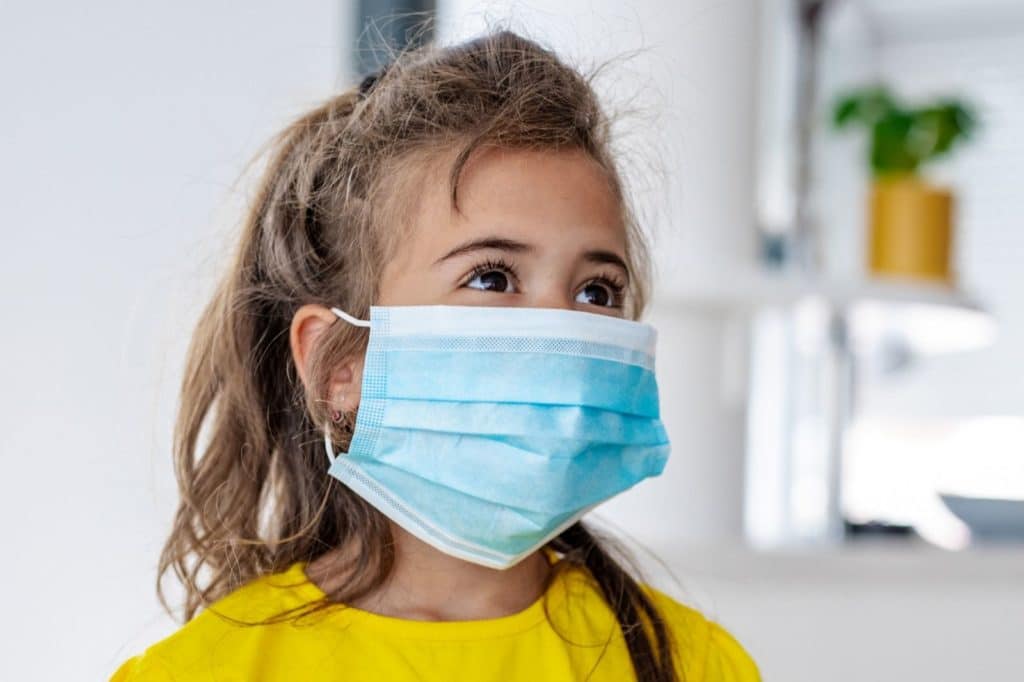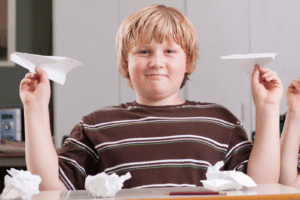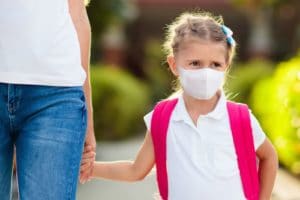This school year looks very different compared to last year. The phrase “social distancing” is now part of our everyday vocabulary, and masks are now an essential part of our wardrobe. Navigating a new school year with these factors and the safety measures your school administration has put in place has likely taken some time to get adjusted to. The same goes for your students.
In fact, the American Psychological Association (APA) has predicted that there will be a “tough readjustment period” for students. Whether your school is meeting virtually, in person, or using a hybrid model, your students have had to let go of their expectations for what a typical school year looks like and adjust to a new way of doing things. You may have already noticed that this adjustment process can come with its own set of difficulties, behavioral changes, and mental health challenges in your students. Being aware of some of the changes you are likely to see in your students is an important step in helping them adjust comfortably to this new normal.
What to Expect
You may notice that some of your students are exhibiting signs of stress as they adjust not only to the new school year in general, but also to a new way of doing things at school. Children and adolescents often struggle to be able to put into words how they are feeling, so stress often manifests itself in physical ways, changes in mood, or changes in behavior, according to The Harvard School of Public Health.
For example, a student might complain of having a stomachache and say they want to go home when it is really a sign that they are stressed about leaving home to go to school or adjusting to the changes at school. Common signs of stress in children, according to the CDC, include:
- Excessive crying or sadness
- Regressing to behaviors they’ve outgrown (thumb sucking, bathroom accidents, etc.)
- Increased worrying
- Changes in eating or sleeping patterns
- Increased irritability
- Acting out/increase in aggressiveness
- Changes in school performance
- Decreased school attendance
- Changes in concentration/attention
- Unexplained physical pains (stomachaches, headaches, etc.)
- Increased substance use
- Loss of enjoyment in activities once enjoyed
As an educator, you’ll want to keep an eye out for these stress symptoms in your students. Additionally, you’ll want to keep an eye out for any changes in your students’ mental health. A recent study found that 14% of children have experienced a worsening in their mental health. Additionally, students who have existing mental health issues may experience an increase in their symptoms, particularly in the areas of anxiety, depression, trauma, grief, and loss, according to the APA.
There is also the possibility that one of your students may experience more severe mental health symptoms. Stressors can precede the onset or worsening of mental health conditions (known as the “stress diathesis model”), and your students are likely being exposed to numerous stressors at this time. For example, you may notice a student who has experienced depressive symptoms in the past has started talking more and more about self-harm (like cutting), making comments like, “I wish I could just disappear,” or giving away possessions. This increase in both the intensity and frequency of these symptoms may have been exacerbated by the stress of adjusting to a new way of being a student or what’s going on at home. In these situations, especially when a student is exhibiting behavior that may indicate they are contemplating suicide, take immediate action. Contact your school counselor or other appropriate helper to ensure your student’s safety.
Because you have regular contact with your students during the week, you play an important role in being able to spot any changes in your students’ mental health. And this can enable them to access helpful resources as soon as possible.
How to Help
To help make your students’ adjustment to the new school format as smooth as possible and to help minimize stressors that may impact their mental health, there are several things you can implement as you begin the new school year. First of all, remember that a regular routine and keeping things consistent is more important now than it ever was. With all of the uncertainty going on in the world and possibly in your students’ own homes, the dependable structure and routine can be a welcome respite and an opportunity to let their worries and concerns fade into the background, even if it’s only for the duration of the school day.
Another helpful strategy to consider implementing is integrating Social Emotional Learning (SEL) into your classroom, no matter what subject you teach. When students are able to be better aware of their own emotions and how to respond to them, they learn healthy ways of coping with stress and negative emotions. The APA emphasizes that SEL can help provide students with the tools they may need to cope with any stress or anxiety they are currently experiencing. To help you implement social and emotional learning in your classroom, The Collaborative for Academic, Social, and Emotional Learning has put together a helpful list of resources for students, educators, and administrators.
Even if your class is meeting virtually, it is helpful to continue to foster a sense of community among your students. Social interaction is incredibly important, especially now, and school is often one of the primary sources of connection and community for students. The Harvard School of Public Health is encouraging educators to incorporate strategies for helping students connect with one another both throughout the day and throughout the year. This could look like focusing on group projects and group discussions to help facilitate connection both inside and outside the classroom, even if it’s only virtually.
Beyond general mental and emotional health, you may have students who are experiencing more severe issues that are being exacerbated by COVID-19, including aggressive/unsafe behaviors, truancy, trauma, severe depression or anxiety, bipolar disorder, or other special needs.These students will require extra support during this time. Follow your school’s guidelines, and work closely with the appropriate support team to develop plans to keep your students safe and healthy and de-escalate any crisis situations you may encounter. It may also be helpful to see if you can coordinate with the student’s mental health team (therapists, psychiatrists, etc.) so that you can make sure you are supporting their overall treatment plan in the classroom.
And, finally, it is crucial that you also are practicing self-care during this time. As an educator, you are faced with the challenging work of finding creative ways to help your students learn within the new structure of the school day. Additionally, you may be dealing with your own stressors both in your personal life and at school. By prioritizing your own physical, mental, emotional, and relational wellbeing, you are ensuring that you can be the best educator for your students. Make sure you are reaching out to your support network, getting enough sleep, taking breaks, and making time for leisure to help you manage your own stress so that you are free to be fully present to your students.










